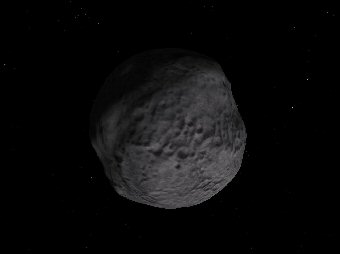BY LETTER
Cerean Type Rock dwarf
Small rocky planetoid; represents one of the most common types of body in many solar systems.
Commonly called rock dwarf worlds, these bodies can be among the most common types found in any solar system. Forming in the inner part of a solar system, they are essentially gigantic and geologically inert silicate conglomerations. While some strata differentiation may have occurred during the world's early formative period, further geological development is almost always entirely driven by outside influences, such as impact events or gravitational heating due to close encounters with much larger bodies. However, in a mature solar system these worlds will have either formed as moons, or will have been relegated to stable orbits in asteroid belts or even in single solar orbits.
Cerean worlds may have varying amounts of heavy metals, of course, depending on the initial metallicity of the parent sun. The cores of the body tend to have the highest concentrations of heavy metals, while lighter materials, including volatiles, are found in the upper crustal regions. Indeed, water ice may be accumulated on permanently shadowed regions of the surface over the body's lifetime.
Example: Ceres
Commonly called rock dwarf worlds, these bodies can be among the most common types found in any solar system. Forming in the inner part of a solar system, they are essentially gigantic and geologically inert silicate conglomerations. While some strata differentiation may have occurred during the world's early formative period, further geological development is almost always entirely driven by outside influences, such as impact events or gravitational heating due to close encounters with much larger bodies. However, in a mature solar system these worlds will have either formed as moons, or will have been relegated to stable orbits in asteroid belts or even in single solar orbits.
Cerean worlds may have varying amounts of heavy metals, of course, depending on the initial metallicity of the parent sun. The cores of the body tend to have the highest concentrations of heavy metals, while lighter materials, including volatiles, are found in the upper crustal regions. Indeed, water ice may be accumulated on permanently shadowed regions of the surface over the body's lifetime.
Example: Ceres
Related Articles
Appears in Topics
Development Notes
Text by John M. Dollan's Planet Classification List
Initially published on 24 September 2001.
Initially published on 24 September 2001.







